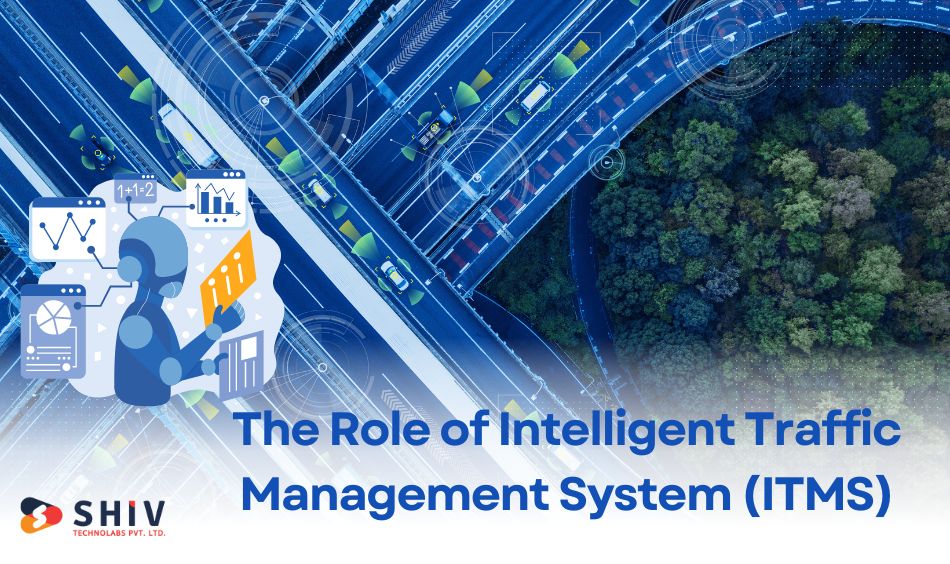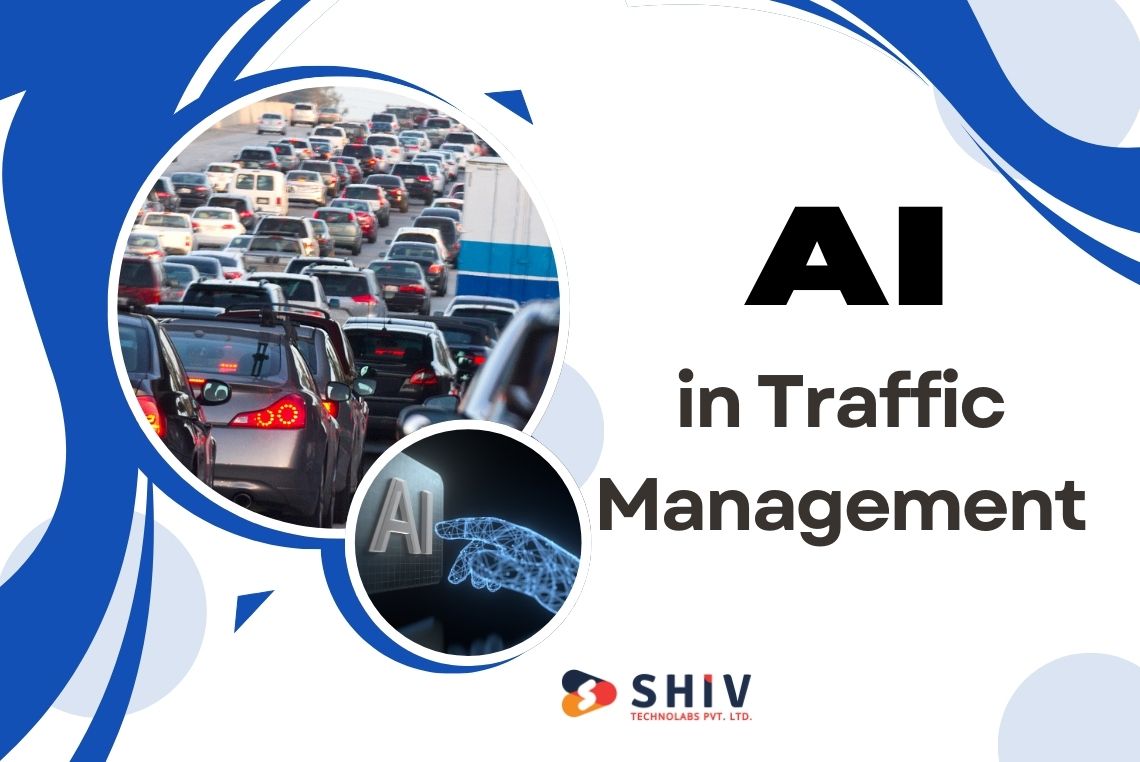Table of Contents
The exponential growth of urban areas has brought with it significant challenges in managing traffic effectively. With more vehicles on the road than ever before, traditional traffic management systems are increasingly struggling to cope with the demands placed upon them. This has led to increased congestion, longer commute times, and a higher incidence of road accidents. In response to these challenges, Artificial Intelligence (AI) is being integrated into traffic management systems to enhance road safety and efficiency. By leveraging data, machine learning, and advanced algorithms, AI is transforming how we approach traffic management, promising a future where road safety is significantly improved.
Understanding the Challenges

The challenges in traffic management are multifaceted and complex. Urbanization has led to a significant increase in the number of vehicles on the road, contributing to congestion and longer travel times. This congestion is not just an inconvenience; it is also a major contributor to traffic accidents. Traditional traffic management systems, which rely on fixed timing for traffic signals and manual monitoring, are not equipped to handle the dynamic nature of modern traffic. This results in inefficiencies, such as traffic jams, which can lead to increased stress for drivers and a higher likelihood of accidents.
Moreover, the environmental impact of congested traffic cannot be overlooked. Vehicles idling in traffic contribute to air pollution, which has long-term effects on public health and the environment. There is also the issue of resource allocation, as emergency services can be delayed due to traffic congestion, potentially leading to life-threatening situations.
These challenges highlight the need for a more intelligent and adaptive approach to traffic management—one that can respond to real-time conditions and anticipate potential issues before they become problems. This is where AI comes into play.
The Role of Artificial Intelligence

AI offers a powerful solution to the challenges of modern traffic management. By processing vast amounts of data from a variety of sources—such as cameras, sensors, and GPS systems – AI can provide real-time analysis and predictions that help manage traffic more effectively. Unlike traditional systems, AI can adapt to changing conditions, optimizing traffic flow and reducing congestion.
One of the primary benefits of AI in traffic management is its ability to predict traffic patterns. By analyzing historical data and current conditions, AI systems can forecast where and when traffic will build up, allowing traffic management centers to take proactive measures. For example, AI can adjust traffic signal timings to accommodate heavier traffic on certain routes, preventing congestion before it occurs.
AI also enhances road safety by monitoring traffic in real-time and identifying potential hazards. For instance, AI systems can detect when a vehicle is driving erratically or when a pedestrian is about to step into the street. In such cases, the system can alert nearby drivers or even intervene to prevent an accident. This capability goes beyond what traditional traffic systems can achieve, making AI a crucial component of modern road safety strategies.
The Role of Intelligent Traffic Management System (ITMS)
Intelligent Traffic Management Systems (ITMS) represent the next step in the evolution of traffic management. By integrating AI with existing infrastructure, ITMS can create a unified system that manages traffic more effectively. These systems use AI to monitor traffic conditions in real-time, adjusting traffic signals and rerouting traffic as needed to minimize congestion and enhance safety.
One of the key features of ITMS is its ability to respond to incidents quickly. When an accident or other event occurs, the system can immediately reroute traffic to avoid the affected area, reducing the risk of secondary accidents. ITMS can also prioritize emergency vehicles, ensuring that they can reach their destinations as quickly as possible, even during peak traffic hours.
Furthermore, ITMS can collect and analyze data over time, providing valuable insights into traffic patterns and behaviors. This information can be used to improve traffic management strategies, such as optimizing the placement of traffic signals or identifying areas where additional infrastructure is needed. In this way, ITMS not only improves current traffic conditions but also contributes to long-term urban planning.
Artificial Intelligence in Traffic Management and Road Safety
AI’s role in traffic management and road safety is extensive and multifaceted. By analyzing data from a wide range of sources, AI can provide a detailed and accurate picture of traffic conditions, allowing for more informed decision-making. This data-driven approach is essential for addressing the complexities of modern traffic management, where conditions can change rapidly and unpredictably.
One of the most significant ways AI contributes to road safety is through predictive analytics. By analyzing historical traffic data, AI can identify patterns and trends that may not be immediately apparent to human observers. For example, AI can detect that a particular intersection tends to experience a high volume of traffic at certain times of day, allowing traffic management centers to adjust signal timings accordingly.
In addition to predictive analytics, AI also plays a crucial role in real-time monitoring and response. AI systems can continuously monitor traffic conditions, detecting potential hazards such as vehicles that are moving too quickly or too slowly, or pedestrians who are not using designated crosswalks. When such hazards are detected, the system can take immediate action, such as alerting drivers or adjusting traffic signals to prevent accidents.
AI is also essential for managing traffic during emergencies. In the event of a natural disaster or other large-scale event, AI can help manage the evacuation process by optimizing traffic flow and ensuring that emergency vehicles can reach affected areas as quickly as possible. This capability is particularly important in densely populated urban areas, where traffic congestion can pose a significant barrier to effective emergency response.
# How Does AI Boost Road Safety?
AI contributes to road safety in several key ways, each of which addresses a different aspect of traffic management. These include enhancing safety and security, improving reliability and dependability, increasing efficiency and effectiveness, and mitigating pollution issues.
Safety and Security
One of the primary benefits of AI in traffic management is its ability to enhance safety and security. By continuously monitoring traffic conditions and identifying potential hazards, AI systems can take proactive measures to prevent accidents. This includes everything from adjusting traffic signals to prevent collisions to alerting drivers about dangerous conditions on the road.
In addition to preventing accidents, AI can also improve the overall security of traffic systems. For example, AI can be used to detect and respond to incidents of road rage or other forms of aggressive driving, helping to reduce the risk of violence on the road. AI can also assist law enforcement by identifying vehicles that are being driven in a suspicious manner, such as those that are speeding or swerving between lanes.
Reliability and Dependability
AI-driven traffic systems are highly reliable and dependable. Unlike human operators, AI systems do not experience fatigue or distraction, which means they can consistently monitor and manage traffic conditions without interruption. This reliability is essential for ensuring that traffic management systems operate effectively, even during periods of high demand.
Moreover, AI systems can quickly adapt to changing conditions, such as sudden increases in traffic volume or unexpected road closures. This adaptability ensures that traffic management systems remain effective even in the face of unforeseen challenges, reducing the likelihood of accidents and improving overall road safety.
Efficiency & Effectiveness
Efficiency and effectiveness are critical components of any traffic management system, and AI excels in both areas. By analyzing traffic patterns in real-time, AI can optimize signal timings and reroute traffic to avoid congestion. This not only improves traffic flow but also reduces the likelihood of accidents caused by stop-and-go conditions or driver frustration.
In addition to optimizing traffic flow, AI can also improve the efficiency of resource allocation. For example, AI can be used to prioritize the deployment of traffic enforcement officers to areas where they are most needed, such as high-traffic intersections or areas with a high incidence of accidents. This targeted approach ensures that resources are used effectively, contributing to safer roads.
Mitigating Pollution Issues
AI also plays a role in environmental safety by helping to mitigate pollution issues. Traffic congestion is a major contributor to air pollution, as vehicles idling in traffic produce significant amounts of emissions. By optimizing traffic flow and reducing congestion, AI can help to decrease the amount of time vehicles spend idling, leading to lower emissions and a cleaner environment.
In addition to reducing emissions, AI can also support the adoption of cleaner transportation options, such as electric vehicles. For example, AI can be used to optimize the placement of charging stations, ensuring that they are conveniently located for drivers and encouraging the use of electric vehicles. This contributes to a more sustainable transportation system, which is essential for long-term road safety and environmental health.
Traffic-related Concerns Taken Care of by Artificial Intelligence
AI addresses a wide range of traffic-related concerns, from autonomous vehicles to enhanced parking systems. Each of these areas represents a different aspect of traffic management, and AI plays a critical role in improving safety and efficiency across the board.
# Autonomous Vehicles
Autonomous vehicles represent one of the most significant advancements in traffic management, and AI is at the heart of this technology. These vehicles rely on AI to navigate roads, obey traffic laws, and avoid collisions, all without the need for human intervention. By removing the potential for human error, autonomous vehicles can significantly reduce the risk of accidents, making roads safer for everyone.
In addition to improving safety, autonomous vehicles also offer the potential to reduce congestion. By communicating with each other and with traffic management systems, these vehicles can optimize their routes and travel more efficiently, reducing the overall demand on road infrastructure.
# Traffic Management Solutions
AI-driven traffic management solutions include a wide range of technologies, from smart traffic lights to adaptive traffic control systems. These solutions use AI to analyze traffic conditions in real-time and make adjustments that improve traffic flow and reduce congestion.
For example, smart traffic lights can adjust their timing based on the current traffic volume, ensuring that vehicles spend less time idling at red lights. Adaptive traffic control systems can reroute traffic in response to accidents or other incidents, preventing congestion from building up and reducing the likelihood of secondary accidents.
# Law Enforcement
AI also plays a critical role in law enforcement, particularly in the area of traffic violations. By automating the detection of violations such as speeding or running red lights, AI can improve compliance with traffic laws and reduce the incidence of dangerous driving behaviors.
In addition to detecting violations, AI can also assist in the enforcement of traffic laws by providing law enforcement officers with real-time information about traffic conditions. This information can help officers make more informed decisions about where to deploy resources and how to respond to incidents, improving overall road safety.
# Passenger Transportation
AI is enhancing passenger transportation by optimizing routes, reducing wait times, and improving the overall travel experience. This is particularly important in urban areas, where public transportation systems are often under significant strain due to high demand.
By using AI to analyze data on passenger flows and traffic conditions, transportation authorities can optimize routes and schedules to minimize delays and reduce congestion. This not only improves the efficiency of public transportation systems but also encourages more people to use these services, reducing the number of vehicles on the road and decreasing the risk of accidents.
# Enhanced Parking Systems
Parking is a significant concern in many urban areas, where the availability of parking spaces is often limited. AI-powered parking systems can help address this issue by guiding drivers to available parking spots in real-time. This reduces the time spent searching for parking, which can decrease traffic congestion and lower the risk of accidents in crowded areas.
In addition to improving the efficiency of parking, AI can also help to reduce the environmental impact of driving. By minimizing the time spent searching for parking, AI-powered systems can reduce vehicle emissions and contribute to a cleaner environment.
How AI Comprehensively and Efficiently Supports Traffic Management
AI supports traffic management in several ways, each of which contributes to a more efficient and safer road system. These include preventing traffic snarls, eliminating accidents, and providing a more seamless driving experience.
# Preventing Traffic Snarls
One of the primary ways AI supports traffic management is by preventing traffic snarls before they occur. By analyzing real-time data on traffic conditions, AI can predict where and when congestion is likely to build up and take proactive measures to prevent it.
For example, AI can adjust traffic signal timings to accommodate heavier traffic on certain routes, or reroute vehicles to less congested areas. This proactive approach helps to prevent the formation of bottlenecks, ensuring smoother traffic flow and reducing the likelihood of accidents.
# Eliminating Accidents Means Improved Safety
AI plays a crucial role in eliminating accidents by continuously monitoring road conditions and driver behavior. By identifying potential hazards, such as erratic driving or pedestrians crossing unexpectedly, AI systems can take immediate action to prevent accidents.
This capability is particularly important in high-risk areas, such as intersections or highways, where accidents are more likely to occur. By eliminating accidents, AI contributes to a safer driving environment for all road users, including drivers, passengers, and pedestrians.
# Seamless Driving Experience
AI contributes to a more seamless driving experience by optimizing traffic signals, providing real-time traffic updates, and guiding drivers through the most efficient routes. This reduces stress and allows drivers to focus more on safety, rather than navigating through congested or unfamiliar areas.
In addition to improving the driving experience, AI also supports the adoption of new technologies, such as autonomous vehicles and electric cars. By integrating these technologies into existing traffic management systems, AI ensures that the transition to a more advanced transportation system is smooth and efficient.
# AI in Traffic Management: Real-Life Use Cases
Several companies and organizations are leading the way in the development and implementation of AI-driven traffic management systems. These real-life use cases demonstrate the potential of AI to transform traffic management and improve road safety.
Intel
Intel has developed AI-based solutions that analyze traffic data to improve traffic flow and reduce accidents. Their technology is used in various cities worldwide to create safer and more efficient transportation systems. By leveraging advanced algorithms and machine learning, Intel’s AI solutions can predict traffic patterns, optimize signal timings, and provide real-time updates to drivers.
Intel’s AI technology is also being used to support the development of autonomous vehicles, which rely on AI to navigate roads and avoid collisions. By integrating AI into both traffic management systems and autonomous vehicles, Intel is helping to create a more connected and safer transportation network.
ParkMobile & Google
ParkMobile, in collaboration with Google, has integrated AI to help drivers find parking spots in real-time. This reduces the time spent searching for parking, cuts down on emissions, and decreases the likelihood of accidents in congested areas. By using AI to analyze data on parking availability and traffic conditions, ParkMobile and Google have created a system that not only improves the efficiency of parking but also contributes to overall road safety.
In addition to improving parking, this AI-driven solution also supports the adoption of electric vehicles by making it easier for drivers to find charging stations. This is an important step in the transition to a more sustainable transportation system, which is essential for long-term road safety and environmental health.
At Shiv Technolabs, we specialize in providing cutting-edge AI/ML software development services tailored to meet the unique needs of traffic management systems. As a leading AI/ML development company in USA, we are committed to delivering innovative solutions that enhance road safety and efficiency. Partner with us to leverage the power of AI in transforming your traffic management strategies and driving your projects toward success.
FAQs
# How Does AI Help to Solve Traffic Management?
AI helps solve traffic management challenges by providing real-time data analysis, optimizing traffic flow, and predicting potential traffic issues before they occur. This leads to more efficient traffic systems and safer roads. AI’s ability to process large amounts of data and make quick decisions allows it to manage traffic in ways that traditional systems cannot, reducing congestion and improving safety.
# How Does AI Improve Road Safety to Reduce Accidents?
AI improves road safety by continuously monitoring traffic conditions, predicting potential hazards, and taking proactive measures to prevent accidents. It enhances the ability of traffic management systems to respond to real-time conditions and reduce the risk of collisions. By providing real-time updates and alerts to drivers, AI helps them make safer decisions on the road, reducing the likelihood of accidents.
# What Are the Core Ethical Concerns with AI in Traffic Management?
The ethical concerns with AI in traffic management include data privacy, the potential for bias in AI algorithms, and the reliance on AI for critical decision-making. Ensuring that AI systems are transparent, fair, and accountable is essential to addressing these concerns. It is important to develop AI systems that respect user privacy and are free from bias, while also providing reliable and accurate traffic management solutions.
# What Are Some Examples of AI Applications in Traffic Management?
Examples of AI applications in traffic management include smart traffic lights that adjust based on real-time conditions, autonomous vehicles that navigate safely, and AI-driven law enforcement tools that detect traffic violations automatically. These applications demonstrate the potential of AI to improve traffic flow, reduce congestion, and enhance road safety.
# Which Company Provides the Best AI/ML Development Software for Traffic Management?
Several companies offer top-tier AI/ML development software for traffic management, including Intel, IBM, and Siemens. The best choice depends on specific needs, such as scalability, integration capabilities, and support services. These companies provide solutions that can be tailored to meet the unique challenges of traffic management in different urban environments.




















